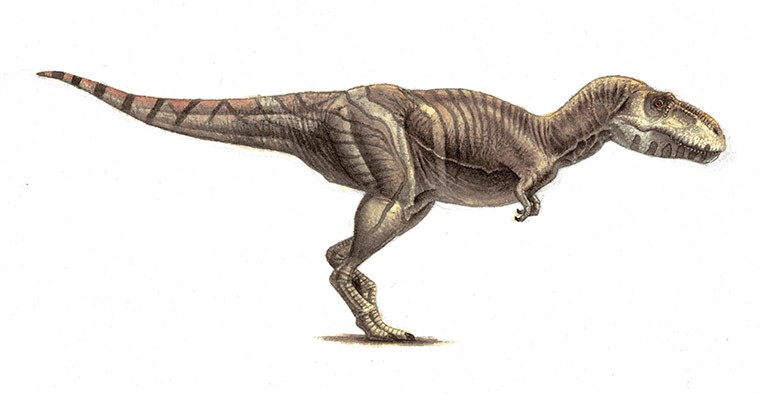Post by dinosauria101 on Jun 6, 2019 9:16:23 GMT 5
Deinocheirus mirificus
Deinocheirus is a genus of very large ornithomimosaurian dinosaur that lived in what is now southern Mongolia during the late Cretaceous period around 70 million years ago. The genus Deinocheirus contains one species, Deinocheirus mirificus. D. mirificus was long thought of as a very mysterious dinosaur, known only from a set of gigantic fossil arm bones. The discovery of more complete skeletons helped to solve this longstanding mystery, revealing a very strange, giant, bipedal omnivore. Deinocheirus mirificus was a large ornithomimosaurian, measuring up to 11 m (36 ft) long, and with an estimated upper weight of 6.358 t (6.258 long tons; 7.008 short tons). Though it had many of the typical skeletal features of its group, its overall appearance was very different from its relatives. While other ornithomimosaurians were light and fleet-footed, Deinocheirus had evolved to outsize its predators, and effectively became slower and bulkier.

Tarbosaurus bataar
Tarbosaurus belongs in the subfamily Tyrannosaurinae within the family Tyrannosauridae, along with the earlier Daspletosaurus, the more recent Tyrannosaurus and possibly Alioramus. Animals in this subfamily are more closely related to Tyrannosaurus than to Albertosaurus and are known for their robust build with proportionally larger skulls and longer femurs than in the other subfamily, the Albertosaurinae. Although many specimens of this genus have been found, little definite data was confirmed on the dinosaur as of 1986, though it was presumed to share many characteristics with other tyrannosaurids. The close similarities have prompted some scientists to suggest a possible link between the North American and Eurasian continents at that time, perhaps in the form of a land bridge.As with most dinosaurs, Tarbosaurus size estimates have varied through recent years. It could have been 10 to 12 meters long, with a weight of 5 - 7 tons.

Credit to Wikipedia
Deinocheirus is a genus of very large ornithomimosaurian dinosaur that lived in what is now southern Mongolia during the late Cretaceous period around 70 million years ago. The genus Deinocheirus contains one species, Deinocheirus mirificus. D. mirificus was long thought of as a very mysterious dinosaur, known only from a set of gigantic fossil arm bones. The discovery of more complete skeletons helped to solve this longstanding mystery, revealing a very strange, giant, bipedal omnivore. Deinocheirus mirificus was a large ornithomimosaurian, measuring up to 11 m (36 ft) long, and with an estimated upper weight of 6.358 t (6.258 long tons; 7.008 short tons). Though it had many of the typical skeletal features of its group, its overall appearance was very different from its relatives. While other ornithomimosaurians were light and fleet-footed, Deinocheirus had evolved to outsize its predators, and effectively became slower and bulkier.

Tarbosaurus bataar
Tarbosaurus belongs in the subfamily Tyrannosaurinae within the family Tyrannosauridae, along with the earlier Daspletosaurus, the more recent Tyrannosaurus and possibly Alioramus. Animals in this subfamily are more closely related to Tyrannosaurus than to Albertosaurus and are known for their robust build with proportionally larger skulls and longer femurs than in the other subfamily, the Albertosaurinae. Although many specimens of this genus have been found, little definite data was confirmed on the dinosaur as of 1986, though it was presumed to share many characteristics with other tyrannosaurids. The close similarities have prompted some scientists to suggest a possible link between the North American and Eurasian continents at that time, perhaps in the form of a land bridge.As with most dinosaurs, Tarbosaurus size estimates have varied through recent years. It could have been 10 to 12 meters long, with a weight of 5 - 7 tons.

Credit to Wikipedia


